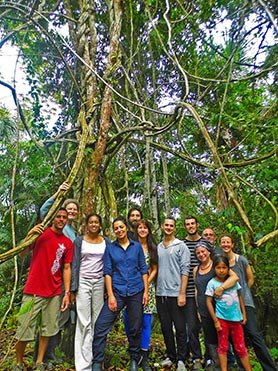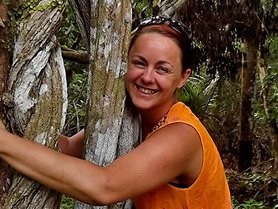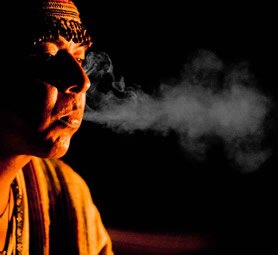What is a ‘dieta’ in the Ayahuasca Tradition?
Posted by: Carlos Tanner
 The Traditional Plant Dieta
The Traditional Plant Dieta
Whereas ayahuasca forms the foundation of the indigenous plant medicine traditions of the Western Amazon, the dieta plays a crucial role in building upon that foundation. It could be considered the support beams of the tradition, upon which the rest of the structure is built.
What is a Dieta?
In simple terms, a dieta is a contract made between a curandero, or student of curanderismo, and a particular plant spirit. The terms of the contract are decided and agreed upon prior to the dieta taking place, and often times the motivation to do a dieta comes at the request or suggestion of the plant spirit, but can also be decided by the person. For instance, in an ayahuasca ceremony or perhaps a dream, a plant spirit may present itself to someone and suggest that he/she do a dieta with it. Another common practice is that a student or curandero feels a connection to a particular plant and decides to do a dieta with it, or a student’s teacher suggests that the student do a dieta.
One of the key terms of the dieta agreement is the length of the dieta, meaning for how long the dieta will be kept. Sometimes this is as short as eight days, although more common would be months and even years. The general agreement in a dieta is that the curandero or student will sacrifice the pleasures of physical stimulation by refraining from sex, alcohol, and sweet, spicy, salty, or rich foods. In most cases pork is given up not only during the dieta but forever. In return for this sacrifice, the plant spirits agree to teach, guide, protect, strengthen, or endow special abilities to the person doing the dieta. Usually, the dieta is done in near isolation in order to avoid any temptations that might come from interactions with people who are not doing or do not understand the dieta. In some indigenous groups, like the Shipibo, people doing dietas have their faces, hands, and feet painted with a dye made from a fruit called huito so that anyone with whom they may come in contact knows to treat them appropriately, and to announce the dieta to the plant spirits.
An interesting feature of the dieta is that the terms are negotiable, meaning that while a plant spirit may initially want a dieta to be of a certain length, like one year, for example, the curandero can counter with an offer of a shorter duration, until the actual terms are agreed upon. The other terms of the dieta, like how strict the dieta will be, can also be negotiated, although it is most likely done much less, as they are well established within the tradition. A common example of the specifics of a dieta would be to refrain from all sexual stimulation and alcohol, and to eat just fish and green plantains for the entirety of the dieta. Usually, only a few types of small toothless fish are eaten, perhaps due to their low fat content.
OPENING A DIETA
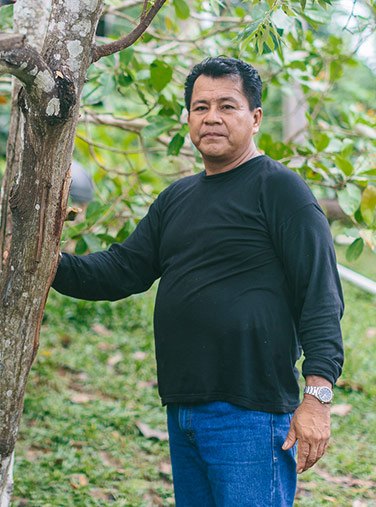
After the dieta has been opened on the spiritual plane, the physical aspects of the dieta begin. After again declaring the intentions for the dieta, the dieter ingests some form of extraction of the plant, which can be a preparation made from boiling the leaves, the bark, or the roots of the plant, or by soaking them in alcohol, or even by smoking a pipe made from the wood of the plant. An extraction of tobacco is added to the preparation, as well, or in the case of smoking the pipe, tobacco would be used as the smoking material. A particular type of tobacco is used in the Amazon traditions, called mapacho, known scientifically as nicotiana rustica. The addition of tobacco plays an important role, as it creates a direct link to the plant, so that smoking mapacho during the dieta connects the dieter to the plant spirit being dieted. Therefore, dieters are encouraged to smoke mapacho, with intention, and if possible using a pipe made from the plant being dieted, to enhance the effect of the dieta.
The preparation of the dieta plant and mapacho is ingested and the dieter then fasts for at least two days. Water is often limited during this time, as well. The same preparation is ingested the following day, and possibly on consecutive days as well or again after a period of time. Once the fast is complete, the dieter then begins eating according to the terms worked out. In the case of students, their teacher may negotiate a less restrictive dieta that includes rice, beans, some vegetables, and even bananas, however the student may also decide on his/her own to keep a more strict dieta to further emphasize his/her determination. Ultimately, it is the dieter who must keep the dieta, but if the terms were established by the teacher, the teacher will also take responsibility for the student keeping the dieta.
THE COMPLETE DIETA
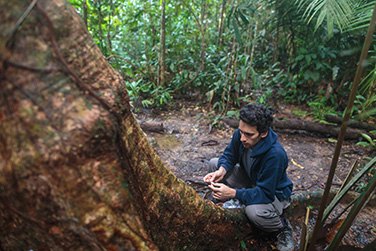
During waking hours, time is often spent in contemplation of the plant spirit, learning and singing icaros for the plant spirit, spending time with the actual plant, and communicating with the plant through the use of mapacho. By smoking mapacho with the intention of connecting with the plant spirit, dieters further their connection and enhance their communication. Dialogues can be formed, and interactions can take place in trance like states produced by smoking or in dreams. The spirit of the plant can be felt on subtle levels and dieters can become more aware of those sensations by directing their attention to them. The purpose of the dieta is to build a relationship with the plant spirit, and just like with building relationships with other people, the more sincere, honest, and well-intentioned attention a dieter gives to the plant spirit, the better the relationship will be. More energy given results in more energy received.
As the dieta progresses, the sensations and communications get stronger. The relationship becomes closer and deeper, eventually forming a special bond, a friendship between the dieter and the plant spirit. It is through this friendship that the curandero or student receives benefit from the relationship, the fruits of the dieta. This new friend provides information, guidance, and energy to assist in the healing process. Sometimes, it takes time for a friendship to develop, especially if the dieters determination is not completely solid, and there is no guarantee as to what will result from a dieta, but if it is done right, with the right intentions, thoughts, actions, and energy, it should produce a beneficial connection that will continue to develop after the dieta has been completed or closed.
CLOSING A DIETA
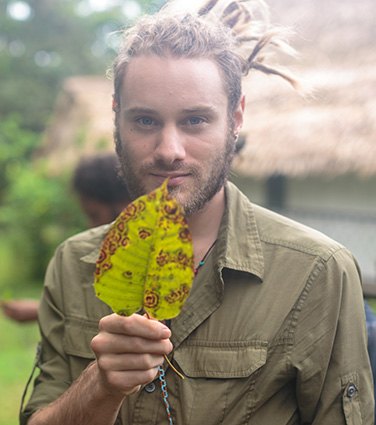
There is also a post-dieta dieta, which may seem confusing, but is also important. The basic idea is that during the dieta a strong relationship is formed, and a great deal of attention and energy is shared, so even though the contractual agreement of the dieta has been fulfilled, a dieter should continue to give energy, thought, and feelings to the plant spirit, which would also be expressed in actions. Therefore, it is important to maintain the same reverence for the plant spirit, even during the ingestion of salt, sugar, oil, etc. so as not to disrespect the relationship or devalue the willingness to make sacrifices. A dieter shouldn’t want to run out and do all the things that were sacrificed for the dieta, even though he/she is, technically, free to do so. Perhaps it could be understood through this example: If a man enters a relationship with a woman as her boyfriend (which could also be considered as a type of contract with negotiable terms like exclusive physical intimacy) and then after a period of time, the two decide to mutually end that relationship, but remain friends, it would be disrespectful for the man (or woman) to have sex with someone else the next day or soon after, as their friendship would most likely suffer as a result.
BREAKING A DIETA
Considering the dieta as a contract, especially a relationship contract, which is a familiar concept in nearly every society, can be helpful when trying to understand the dieta within the tradition of curanderismo. As is the case with relationships between boyfriends and girlfriends, or husbands and wives, breaking the terms of the contract results in consequences. In the case of actual, legally binding contracts like pre-nuptial agreements, the terms of those consequences may also be agreed upon, and most divorce courts recognize a general form of consequences as well. Within the traditions of curanderismo, it is believed that breaking plant spirit relationship contracts, or dietas, also has consequences, and that those consequences are proportionate to three factors.
The first factor would certainly be the form of the breach in contract. Sex or sexual stimulation is considered the worst breach of a dieta and would thus result in the most severe consequences. The degree of disrespect to the terms would play a factor in the consequences, especially regarding other breaches, like naked fondling compared to kissing, or eating a hot fudge sundae compared to putting salt on a grilled fish, or screaming at someone in anger compared to getting frustrated with the lack of connection felt, or fantasizing about sex compared to reminiscing about the sweetness of mangoes. The consequence is proportionate to the act.
The second factor would be the experience level of the dieter. A student doing a dieta for the first time would not face the same consequences as a curandero with many years of experience doing his/her 40th dieta. How well the dieta and its importance is understood and accepted by the dieter would be a factor in the severity of the consequences for a breach. The depth of a relationship with a plant spirit would usually be much deeper for an experienced curandero and therefore he/she should simply know better than a student not to break a dieta.
The third factor would be the particular personality of the plant spirit. Some plant spirits are known to be very strict and unforgiving while others are more easy going and willing to let things slide a bit. The consequences for the same breach in two different dietas with different plants might vary significantly due to the nature or personality of the plant spirit. This factor is also involved when negotiating the terms of a dieta, and is usually indicative at that time of how consequences will most likely be handled, although within the tradition the personalities of particular plant spirits is often well known historically. Extra caution is sometimes advised by a teacher or elder curandero when one of these plants is going to be dieted, accompanied by remarkable stories recounting previous experiences of severe punishments.
So what are the consequences? Within the tradition, and depending on the factors just mentioned, the consequences range from lessening a connection to the plant spirit all the way to becoming seriously ill or dying. The most common consequence would likely be blocking the dieter from having visions during ceremonies, although nearly every curandero has stories about incredibly severe consequences like losing the ability to walk or talk, or having bad things happen continuously until the breach is rectified. Consequences tend to be permanent unless the situation is resolved. Traditionally, this is done by redoing the diet, but for twice as long as the original.
Many people outside of the cultural tradition of curanderismo have trouble understanding the concept of consequences, feeling that plant spirits are like enlightened beings, and therefore would never punish someone, but I think in the context of a contractual agreement, consequences might make more sense. Even with the perception that plant spirits are loving and benevolent, and understanding of consequences is quite logical. Parents teach the concept of consequences to their children to prepare them to be adults. They teach their children about consequences because they love their children, and want to instill in them the ability to make appropriate decisions. I think plant spirits are doing the same thing. Of course, everyone is free to think whatever they like. What I have presented is merely my interpretation of what I have been taught by my teachers and by what I have experienced myself by doing dietas. It took a decade of study for me to reach this understanding, and I am sure I will continue to develop my perspective and ideas in the future.
Beyond the relationships formed with plant spirits thanks to dietas, I think life as a whole can be understood in terms of relationships. In fact, life could actually be defined by relationships. Our relationship to the food we eat, to the environment in which we live, to our coworkers, employers and employees, clients, and job, to our friends and family, our community, and society, to substances like alcohol, tobacco, and drugs, or activities like singing, dancing, and making love, all of these relationships and many more define our lives. It is the nature of the energy within these relationships, and the quantity of love we give and receive through these relationships, that most influences our health. The dieta is a further extension of these life defining relationships into dimensions or energy frequencies often imperceptible in our normal reality, and it is these relationships with spirits that make it possible for curanderos to facilitate powerful transformations for others. We are all aware of how much we get by with a little help from our friends, but perhaps no one knows this as well as curanderos.
Once the dieta is put into the framework of a relationship building experience, it is easier to understand that the focus is not on the sacrifices, but on the rewards. If someone in a relationship is just focused on what he/she has to give up for that relationship, then it is most likely not a healthy relationship. In reality, the sacrifices are accepted without hesitation. We do whatever we can for our true friends and loved ones, and will often give our own lives for the ones we love the deepest. We are willing to make such profound sacrifices because of the profound emotional satisfaction we receive from those relationships. In short, we care so much, that we are more than willing to give up anything that might hinder that relationship. It is not really what defines the relationship, but rather what expresses the level of care put into that relationship. Plant dietas can be considered in the same way.
‘And in the end, the love you take, is equal to the love you make’
– The Beatles
NOTE: Recently, since foreigners have begun drinking ayahuasca and a tourist industry has formed around ayahuasca ceremonies and treatments with curanderos, a new diet has emerged that most people refer to as the ayahuasca diet. This diet was designed to keep people safe during the ceremonies. Ayahuasca can have dangerous effects when mixed with certain substances, namely pharmaceutical medication and most specifically anti-depressant medication or SSRIs. Other negative effects are possible when mixing ayahuasca with some foods as well, like dairy products, but this diet is different from the dieta described above. While the ayahuasca diet can be used to demonstrate one’s determination and is a good idea, it should not be confused with the traditional dieta that forms such an integral part of the science of plant medicine in the Amazon Rainforest.
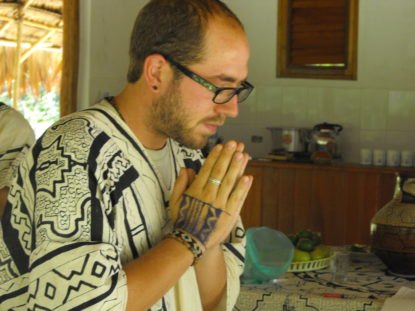 The Traditional Plant Dieta
The Traditional Plant Dieta